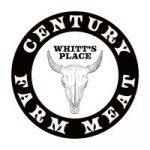Introduction:
Cooking enthusiasts and professional chefs often employ various techniques to enhance the flavor and tenderness of meat. Among these methods, dry brining and dry aging stand out as popular choices. While they both aim to improve the quality of meat, they involve distinct processes with unique outcomes. In this blog post, we will delve into the differences between dry brining and dry aging, shedding light on their respective benefits and applications.
Dry Brining:
Dry brining, also known as salting, is a technique that involves applying salt to the surface of the meat and allowing it to rest in the refrigerator. The salt works its magic by penetrating the meat, drawing out moisture, and eventually being reabsorbed. The process typically takes several hours to overnight, depending on the size and thickness of the meat.
The benefits of dry brining are twofold. Firstly, the salt acts as a seasoning agent, enhancing the overall flavor profile of the meat. The prolonged contact with salt allows it to distribute evenly, resulting in a well-seasoned piece of meat. Secondly, the process helps to improve the juiciness of the meat. As moisture is drawn out and then reabsorbed, the meat retains its natural juices more effectively during cooking, leading to a moist and flavorful end result.
Dry Aging:
Dry aging, in contrast, is a more time-consuming process that involves aging meat in a controlled environment. Typically, larger cuts of meat, such as beef, are used for dry aging. The meat is placed in a specialized refrigerator or room with specific temperature, humidity, and airflow conditions. The aging period can range from several weeks to even months, depending on desired results and the type of meat.
During the dry aging process, a combination of controlled temperature and humidity promotes the breakdown of connective tissues within the meat. Natural enzymes present in the meat work to tenderize it and intensify its flavor. As moisture evaporates from the meat, the flavors become more concentrated, resulting in a unique and complex taste. The dry aging process is known to enhance the meat’s tenderness, develop rich umami flavors, and create a desirable crust on the surface.
Key Differences:
Time: Dry brining is a relatively short-term process, typically ranging from a few hours to overnight. In contrast, dry aging is a significantly longer process, often lasting weeks or even months.
Application: Dry brining is suitable for various cuts of meat, including poultry, pork, and smaller cuts of beef. Dry aging, on the other hand, is predominantly used for larger cuts of beef, such as ribeye or strip loin.
Outcome: Dry brining primarily enhances the flavor and juiciness of the meat, while dry aging intensifies flavor, tenderizes the meat, and adds complexity through the concentration of flavors.
Conclusion:
Both dry brining and dry aging are techniques used to elevate the quality of meat, albeit through different processes. Dry brining provides a quick and effective method to season and improve the juiciness of various cuts of meat. Dry aging, on the other hand, is a patient process that tenderizes the meat, develops complex flavors, and creates a unique culinary experience.
Whether you opt for dry brining or dry aging, understanding these techniques empowers you to enhance the taste and texture of your meat dishes, taking your culinary prowess to new heights. So, next time you’re in the kitchen, consider experimenting with dry brining or dry aging to elevate your cooking game and delight your taste buds.
